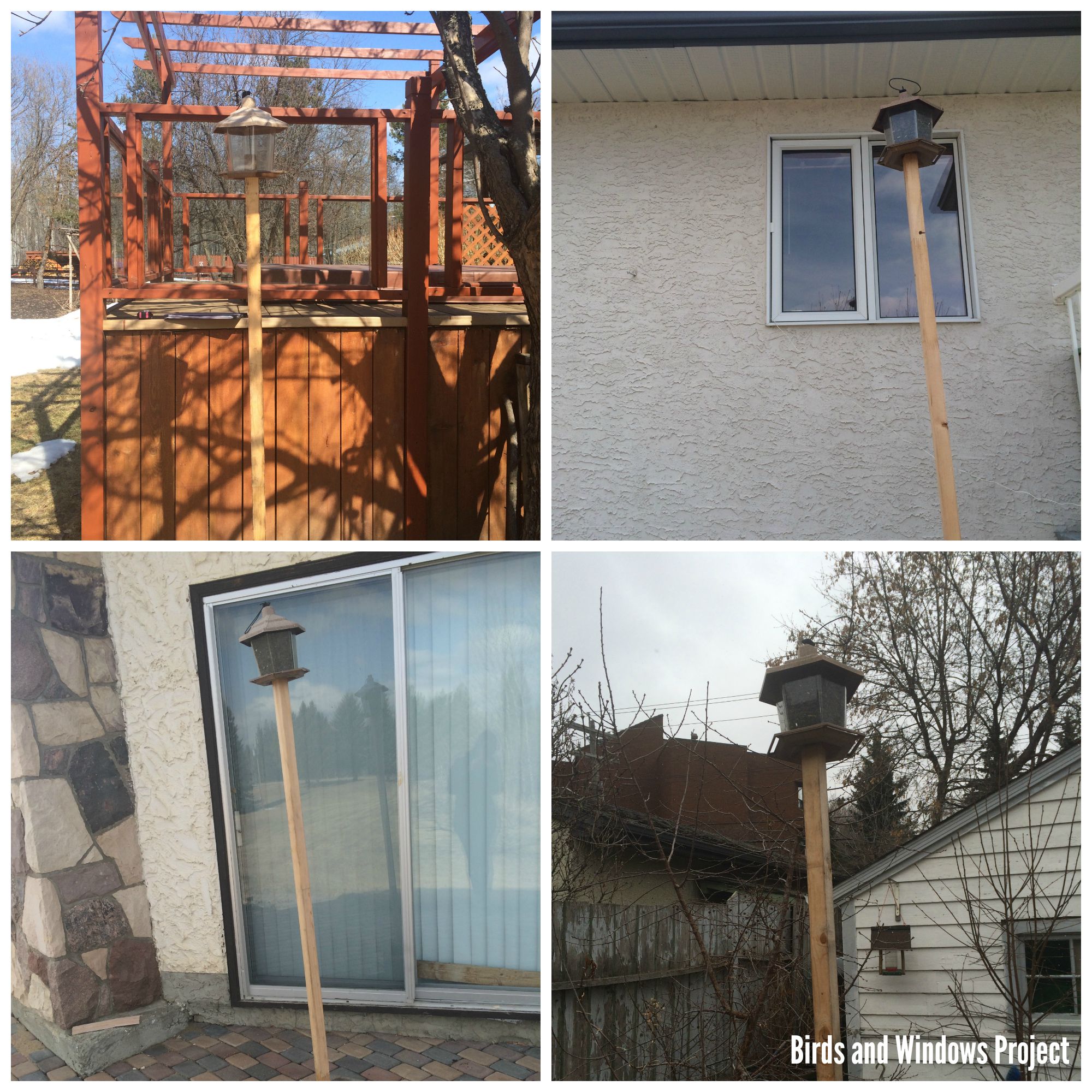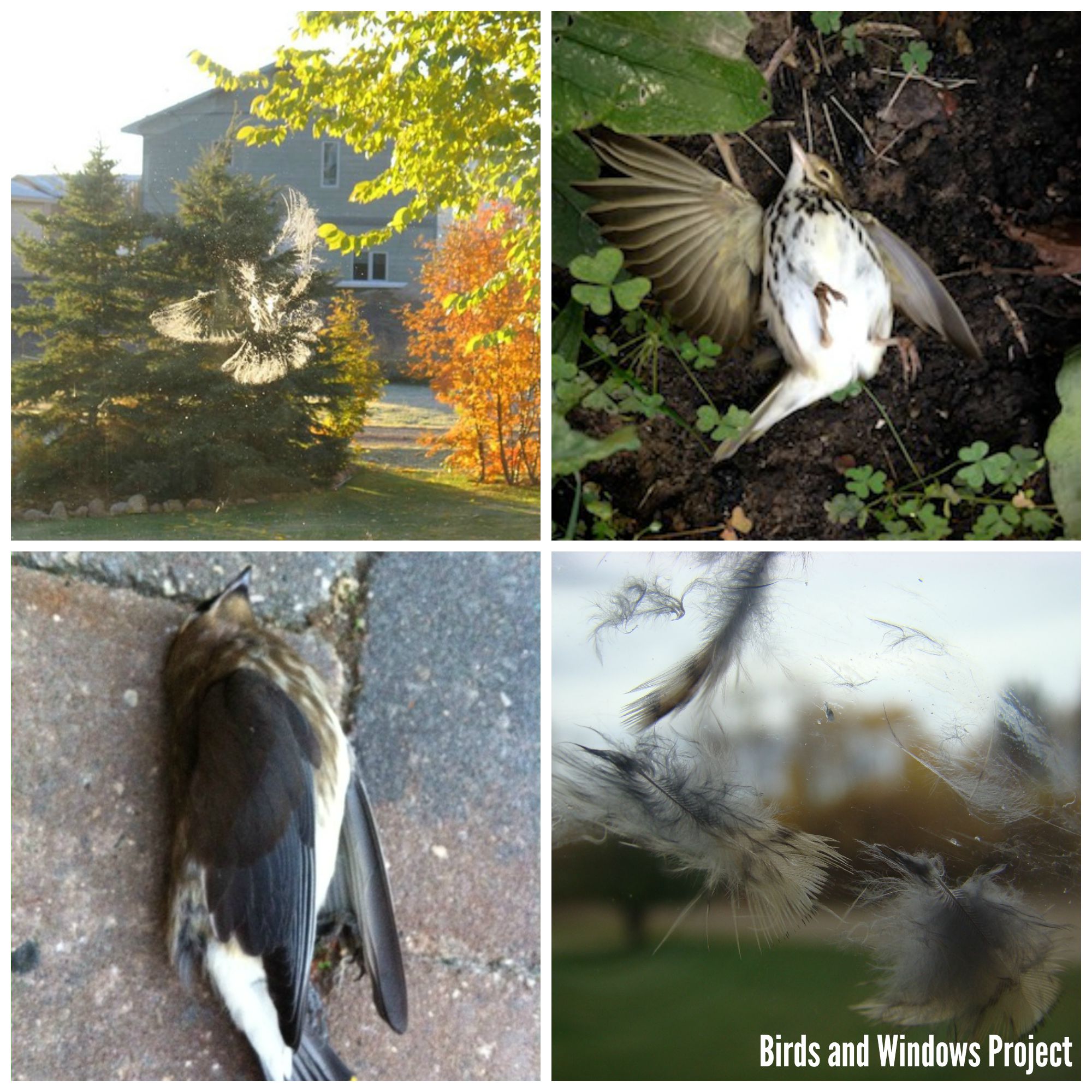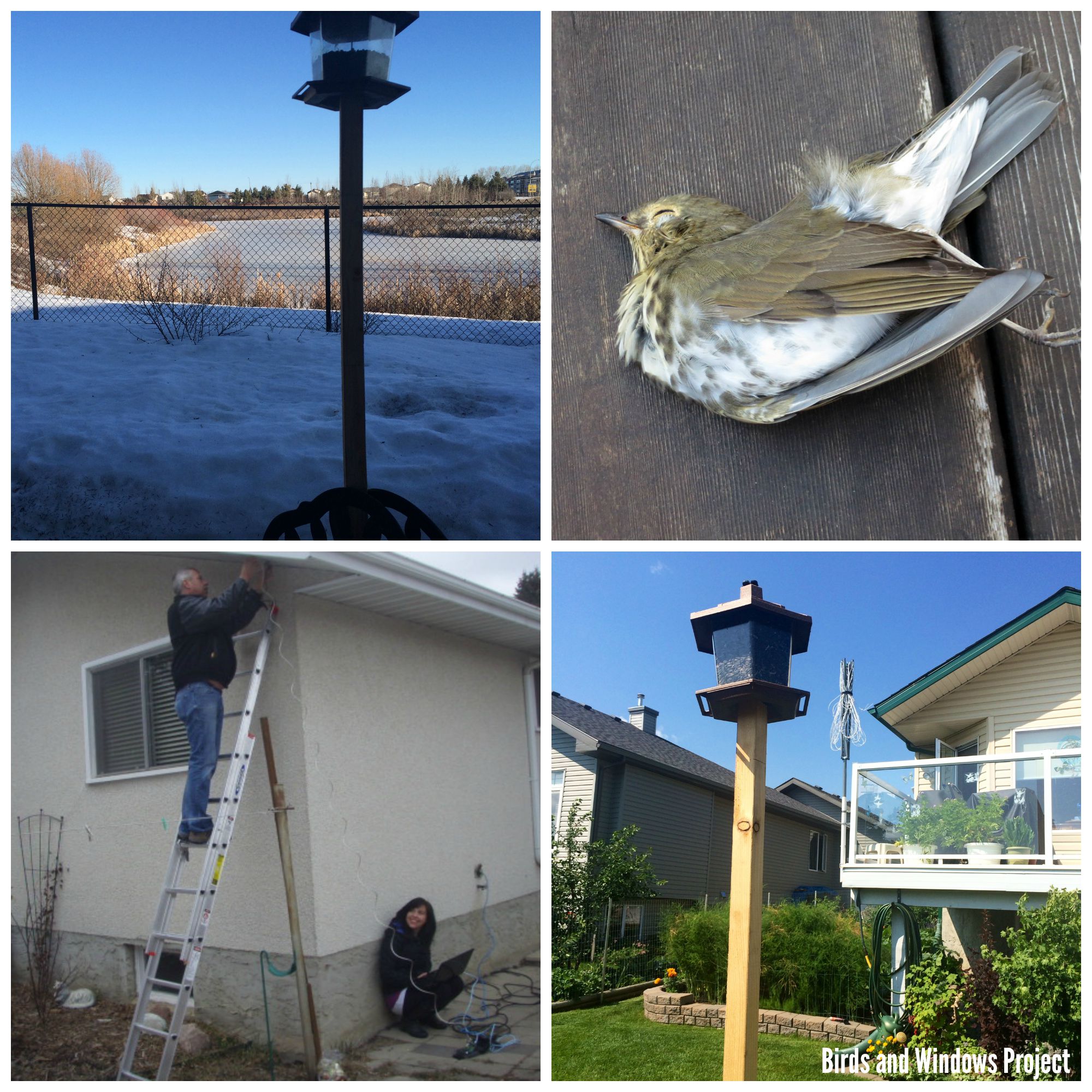We recently published a paper on the effect of bird feeders on bird-window collisions at residential houses. Check it out here!
If you missed it last time, there’s a blog post recap of the bird feeder project. Check it out here!
A few months ago I wrapped up my experiment looking at bird feeders and their effects on bird-window collisions. The data is now analyzed and the results all written up. Here’s what we learned:
In recent years many people have turned to bird feeding as a simple way to interact with nature. More and more people are living in cities than ever before and here interactions with wildlife are limited. Feeding wild birds has created this opportunity.This increase in bird feeders has created a new problem: collisions with buildings. The general public enjoys feeding the birds in their yard but they want to know how to do so safely.
This led to the development of the Birds and Windows Project: Bird Feeder Experiment. The project relied entirely on citizen science and the dedication of the 43 homeowners that were recruited within Edmonton, Alberta and the surrounding area.
The design of this experiment was quite simple. A bird feeder was present at 1 m, 5 m or absent from a study window for one month and then removed or added for the second month. The study was conducted over an entire year and the homeowner searched the study window for evidence of a bird-window collision every day of each trial. A total of 284 trials were completed at 55 windows.

Throughout the study there were 145 bird-window collisions. There were 51 collisions when there was no bird feeder present and this increased to 94 when a feeder was added in front of the window. The mean number of collisions was 0.64 per trial when the feeder was 1 m from the window and 0.72 when the feeder was 5 m from the window.
Comparing each window in its back-to-back trials (feeder vs. no feeder), we found 11 windows had a greater number of collisions when there was no feeder present while 16 windows had more collisions when there was a bird feeder present. 26 windows did not report any collisions at all, but the top 5 windows reported 24, 19, 15, 11 and 9 collisions while participating in the project.
Surprisingly, there was a lot of variation in the number of collisions when looking at the season the trial was conducted in. There was a mean of 0.11 collisions in the winter and this increased to 0.79 during spring migration, 0.54 in the summer breeding months, and 1.08 through fall migration.

This study does support the results of previous studies. The highest mean number of collisions was seen when the bird feeder was the greatest distance from the window. However, there was a lot of variation between houses. This shows that the effect of a bird feeder is largely dependent on the individual home and window being evaluated.
Seasonality was seen to cause a lot of the observed variation in window collision rates. This wasn’t entirely surprising as more than 80% of the birds in Alberta are migratory. They’re just simply not as many birds present in the winter months to collide with windows.
Our results suggest that homeowners can reduce some window collision risk by altering feeder placement. However, this will likely not reduce collisions to zero, particularly at houses where collisions are common. Feeders are only one of many factors, including vegetation and house characteristics that influence whether a residence is likely to have a large number of collisions.
In conducting this study a number of participants provided updates on the activity at their bird feeder and at the end of the project a handful kept their feeder. Homeowners enjoy having birds in their yards and being able to feed them. Feeding wild birds creates an important link between the general public and nature and improving this relationship will continue to promote biodiversity and conservation. Finding successful ways for them to do so could be beneficial to both birds and the millions who feed them.

Literature Cited
Bayne, E. M., C. A. Scobie, and M. Rawson-Clark. 2012. Factors influencing the annual risk of bird-window collisions at residential structures in Alberta, Canada. Wildlife Research 39:583-592.
Klem, D., D. C. Keck, K. L. Marty, A. J. M. Ball, E. E. Niciu, and C. T. Platt. 2004. Effects of window angling, feeder placement, and scavengers on avian mortality at plate glass. Wilson Bulletin 116: 69-73.
Kummer, J. and Bayne, E. 2015. Bird feeders and their effect on bird-window collisions at residential houses. (submitted to Avian Conservation and Ecology)
Machtans, C. S., C. H. R. Wedeles, and E. M. Bayne. 2013. A first estimate for Canada of the number of birds killed by colliding with building windows. Avian Conservation and Ecology 8:90-104.